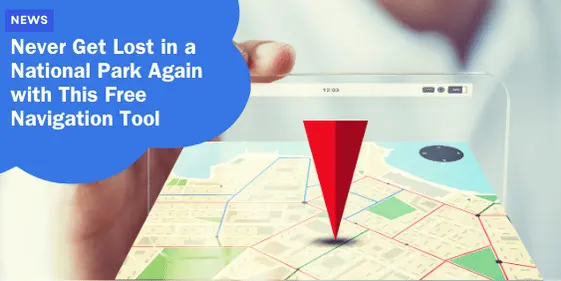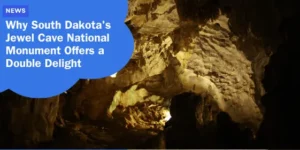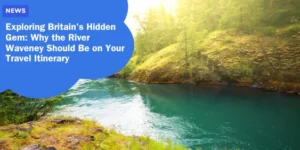Never Get Lost in a National Park Again with This Free Navigation Tool

Unpacking the Problem: Navigational Challenges in National Parks
National parks, celebrated for their pristine beauty and vast wilderness, have long been sanctuaries for explorers and adventurers.
However, one common hurdle visitors often face is the lack of reliable cell service.
Situated in remote locations, these parks frequently have weak or nonexistent wireless reception.
This issue not only hampers communication but also makes navigation a daunting task.
Fortunately, there is a solution that ensures you never lose your way, even in the most secluded parts of these national treasures.
Enter a free navigation tool that leverages the power of Google Maps, revolutionizing the way we experience national parks.
Prepping for Adventure: Downloading Maps for Offline Use
Imagine embarking on a hiking trail deep within the heart of Yellowstone or ascending the rugged peaks of Rocky Mountain National Park without a shred of anxiety about losing your path.
This newfound confidence can be attributed to an incredibly useful feature within the Google Maps app: the ability to download maps for offline use.
To use this feature, launch the Google Maps app on your smartphone and enter the name of the national park you intend to visit in the search bar.
Once you find the park, you will see an option at the bottom of the screen to “Download for offline use.”
Selecting this option will prompt the app to ask, “Download this map?” allowing you to either proceed with the download or cancel.
It’s important to note that downloading maps will occupy some memory space on your device.
Once you select “download,” the map for the entire park area gets stored locally on your phone.
Navigating with Ease: How Offline Maps Work
Once the map is downloaded, there’s no need to worry about losing your way, even if cell service disappears.
The app will display a confirmation message stating: “Download is complete. Just use Maps normally, even when offline.”
Additionally, it will be noted that the downloaded map will expire in one year unless updated.
This feature is invaluable as it ensures continuous navigational assistance, improving the overall experience of exploring national parks.
Remember to download the map before arriving at the park to avoid complications arising from weak or nonexistent cell service.
With the map downloaded, your location will be depicted as a dynamic blue dot on the screen, thereby enabling you to track your position in real-time.
Moreover, various amenities such as restrooms will also be marked, providing a comprehensive guide that enhances convenience and safety.
Enhanced Features: Additional Tools for Park Visitors
This navigation tool was rolled out in April 2023, and it introduced several complementary features designed specifically for national park enthusiasts:
Spotlight on Key Attractions
Identifying key attractions within the park has been greatly simplified.
Notable highlights appear with accompanying photographs, which you can click on for more details.
Additionally, these highlights often include reviews and further insights from the Google Maps community, allowing you to make informed decisions about your visit.
Mapping Out Popular Trails
For those with a penchant for hiking, the app offers meticulously mapped trails extending from start to finish.
These digital trails include crowd-sourced photos, tips, and reviews contributed by fellow hikers.
This communal aspect enhances the hiking experience by providing first-hand information about trail conditions, points of interest, and potential challenges.
Detailed Directions for Comprehensive Navigation
Traveling to and within the park is further optimized through detailed directions.
Whether you’re journeying by car, bicycle, or on foot, the app provides precise routes to park entrances and trailheads.
This eliminates the stress of finding your way and allows you to focus wholly on enjoying your adventure.
Pro Tips: Maximizing Your Park Visit
While this navigation tool offers an immensely valuable resource, it’s still prudent to prepare adequately for your visit.
One quintessential step is stopping by the park’s visitor center upon arrival.
Here, rangers can provide real-time advice and recommendations tailored to your plans.
Engaging with rangers allows you to gain insights about the park that you might not find on the app, such as recent wildlife sightings or temporary trail closures.
Moreover, securing a paper map from the visitor center serves as an essential backup.
Paper maps remain unaffected by digital discrepancies and can be a reliable alternative if your device runs out of battery or encounters technical issues.
Technological Innovation: Bridging the Gap with Virtual Tours
An exciting aspect of the tool is the inclusion of interactive virtual tours.
These tours are particularly beneficial for visitors with mobility impairments or those who experience claustrophobia.
By offering virtual insights into otherwise inaccessible parts of the park, the tours ensure that everyone can relish the beauty and wonder of national parks, irrespective of physical limitations.
Honoring the Past: Cultural and Historical Heritage
The navigation tool is not just about modern convenience; it’s also a gateway to understanding the rich cultural and historical heritage embedded within national parks.
Many parks hold significant meaning for various Native American tribes.
Exhibits within visitor centers, often highlighted by the app, narrate these profound histories and traditions.
By preserving and sharing these stories, national parks operate as living museums, educating visitors about the land’s ancestral past.
Committing to Conservation: Protecting Natural Ecosystems
National parks are not only a haven for visitors but also for wildlife.
The navigation tool underscores the importance of conservation by guiding visitors responsibly through these delicate ecosystems.
By providing accurate information about trails and amenities, the app helps to minimize human impact on the environment, promoting a sustainable relationship between nature and its admirers.
Fun Facts: Intriguing Tidbits About National Parks
To encapsulate the myriad wonders of national parks, here are a few captivating facts:
- Yellowstone National Park, established in 1872, is the world’s first national park.
- Great Smoky Mountains National Park attracts millions of visitors each year, making it the most frequented national park in the United States.
- The tallest tree on Earth, a coast redwood named Hyperion standing at over 379 feet, resides in Redwood National Park, California.
- The Grand Canyon is so massive that it could hold about 900 trillion footballs.
Conclusion: Embrace the Adventure with Confidence
Equipped with the free navigation tool from Google Maps, adventurers can now explore national parks with unprecedented confidence and ease.
This tool bridges the gap between modern technology and the timeless allure of nature, ensuring that your exploration is both enjoyable and safe.
By downloading maps for offline use, taking advantage of enhanced features, and adhering to park guidelines, you can fully immerse yourself in the wonders of these magnificent landscapes.
So, prepare your gear, download your map, and set off on an unforgettable adventure into the great outdoors.






